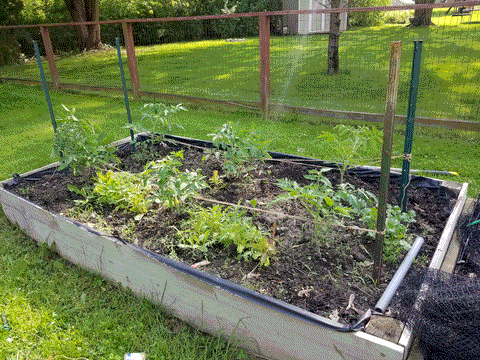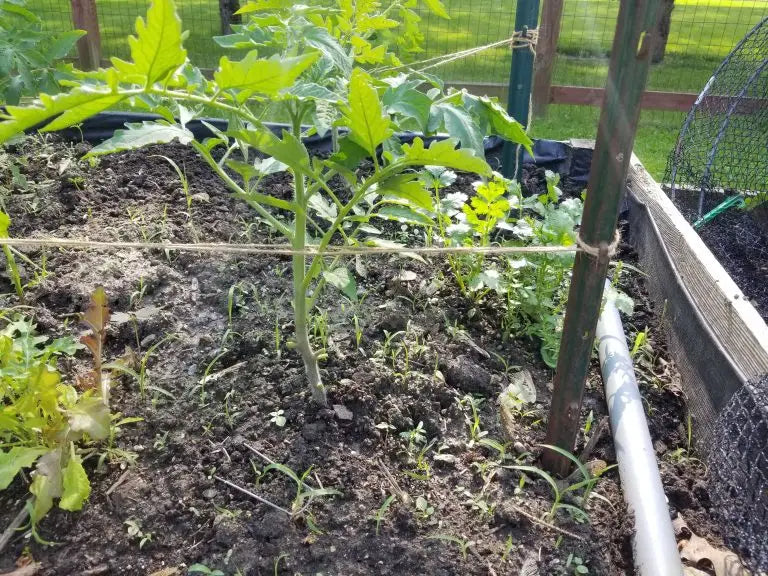After a last season’s mishap with my tomato cages, I decided to try a new technique for staking my tomatoes in my raised bed garden. While on vacation last year, a wind storm blew over the cages, along with the tomato plants. This, in turn, knocked over the netting structure that was used to keep the bunnies out of my garden. Let’s just say that the bunnies had a good feast while I was on vacation!
Florida Weave Trellising
Fast forward to this year: Florida Weave Trellising. Simply put, you sandwich or weave a good comparable-strength twine or jute rope around your plants and also around your stakes. This technique supports the plants on both sides, uses items that you most likely already have around the house and at the end of the season, you simply cut the jute and remove the plants. Sounds like a win-win to me.
I will note that I have read several articles that this trellising method is more suited for determinate tomatoes and I do believe that all of my tomatoes are indeterminates but being that I’m in planting zone 5b and have a shorter growing season, the plants shouldn’t grow so tall as to “outgrow” my Florida Weave Trellis. I’m up for an experiment to see how well this method works for me.
For my 4’ x 8’ raised bed, I drove a 5-foot-tall steel fence post into the soil on each end of each row (3 plants per row). I drove the post into the soil about 1-1/2’ deep, until it was good and solid. You can also put a post between each plant if you feel that is needed (say, you live in a windy area) because as the plants grow, they will rely more and more on those posts. If you don’t have a steel fence post, wooden posts or other stakes should work.
Begin by wrapping your jute or twine around one of your fence posts at approximately 8 inches from the ground and tie off to the post. I used 3-ply jute twine because it is durable and will have very little stretch. You don’t want stretch; you want a firm hold on those plants. From there, weave around each plant in a figure 8 pattern, pulling snug to keep plants secure but not too tight to harm the plants. Once you reach the next post, wrap around the fence post and continue on to the next plant in the same pattern. Once at the end of the row, continue back to the beginning post weaving in the opposite direction in that figure 8 pattern so now the plants are sandwiched in and secure.

As your plants grow, you incrementally weave another figure 8 pattern 6 or so inches up from the last weave to maintain the composure of the plants. Continue this pattern as your plants grow.



